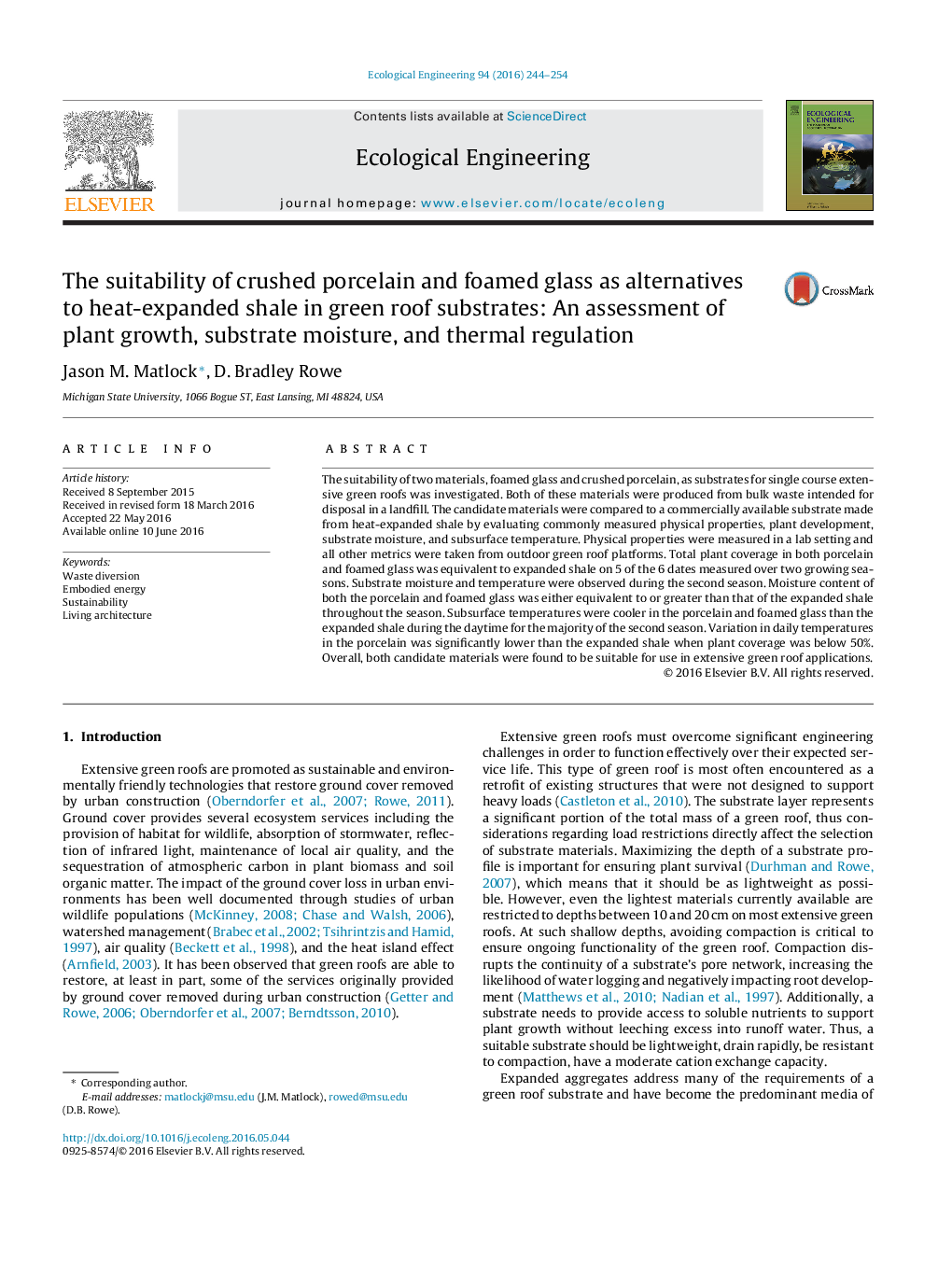| کد مقاله | کد نشریه | سال انتشار | مقاله انگلیسی | نسخه تمام متن |
|---|---|---|---|---|
| 4388551 | 1618005 | 2016 | 11 صفحه PDF | دانلود رایگان |
The suitability of two materials, foamed glass and crushed porcelain, as substrates for single course extensive green roofs was investigated. Both of these materials were produced from bulk waste intended for disposal in a landfill. The candidate materials were compared to a commercially available substrate made from heat-expanded shale by evaluating commonly measured physical properties, plant development, substrate moisture, and subsurface temperature. Physical properties were measured in a lab setting and all other metrics were taken from outdoor green roof platforms. Total plant coverage in both porcelain and foamed glass was equivalent to expanded shale on 5 of the 6 dates measured over two growing seasons. Substrate moisture and temperature were observed during the second season. Moisture content of both the porcelain and foamed glass was either equivalent to or greater than that of the expanded shale throughout the season. Subsurface temperatures were cooler in the porcelain and foamed glass than the expanded shale during the daytime for the majority of the second season. Variation in daily temperatures in the porcelain was significantly lower than the expanded shale when plant coverage was below 50%. Overall, both candidate materials were found to be suitable for use in extensive green roof applications.
Journal: Ecological Engineering - Volume 94, September 2016, Pages 244–254
